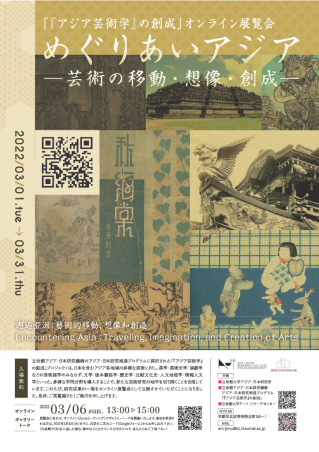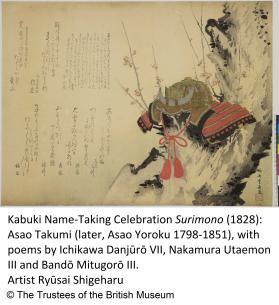-
 14
15
16
17
18
19
20
21
22
23
24
14
15
16
17
18
19
20
21
22
23
24
 [イベント情報]June 8, 2022(Wed)
[イベント情報]June 8, 2022(Wed)The 103rd International ARC Seminar will be held as a Webinar on Wednesday, June 8, starting at 18:00 JST.
The program is as follows:
Speaker: Chikahiko Suzuki (Associate Professor, Department of Liberal Arts, Gunma Prefectural Women's University)
Topic: "KaoKore" and "edomi" - Examples of using humanities materials based on microcontents method
Date: Wednesday, June 8, 2022 18:00 - 19:30 JST
Participation: online via Zoom, free of charge (no reservation required)
*This Webinar is open to everyone, and non-ARC members are also invited to participate via YouTube.
[イベント情報]May 27, 2022(Fri)The 102nd International ARC Seminar, held on May 25, 2022, is now available on YouTube.
The program was as follows:
Topic: A trial to classify Mongolian legal documents using deep learning
Speaker: Biligsaikhan Batjargal (Affiliate Research Professor, Research Organization of Science and Technology, Ritsumeikan University)
We hope you enjoy the video!
The 101st International ARC Seminar, held on May 11, 2022, is now available on YouTube.
The program was as follows:
Topic: Going to War During the Taisho Period: Japan's Siberian Intervention of 1918-1922 as Illustrated by the Pictorial Diaries of Infantryman Takeuchi Tadao
Speaker: Dr. Nadine Willems (Lecturer in Japanese History, School of History, University of East Anglia)
We hope you enjoy the video!
[イベント情報]May 16, 2022(Mon)The 100th International ARC Seminar, held on April 27, 2022, is now available on YouTube.
The program was as follows:
Topic: KOBAYASHI, Ichizo: Social and Cultural Projects as the Two Wheels of his Business
Speaker: Yoshiyuki SENKAI (Executive Board Member and Director, Itsuō Art Museum; Ichizo Kobayashi Memorial Museum; and Ikeda Bunko, Hankyu Culture Foundation)
We hope you enjoy the video!
[イベント情報]April 28, 2022(Thu)We are pleased to announce the Call for Manuscript Submissions for the Art Research Center's journal ART RESEARCH vol. 23-1, 23-2, and 23-3. The publication has been reborn as an online journal.
As an academic journal specializing in arts and culture, the purpose of ART RESEARCH is to widely publicize the results of the research projects and activities conducted by the Art Research Center (ARC), Ritsumeikan University, and its partner institutions and collaborative researchers.
Since its establishment in 1998, the Art Research Center (ARC) has been selected for several national grants as a center of excellence for research in culture, art, and information science. In FY2019, the center assumed the role as the International Joint Digital Archiving Center for Japanese Art & Culture (ARC-iJAC) upon its accreditation by the MEXT as an International Joint Usage/Research Center. The ARC is highly regarded as a leading hub for the digital archiving of Japanese art and culture.
Our online journal will be published three times per year, and at the end of the fiscal year, a print booklet compiling all contributions will be distributed.
We accept manuscripts anytime as we hope to increase the submission opportunities for researchers.
We look forward to receiving your manuscript.
Read more>>[イベント情報]April 21, 2022(Thu)On April 16, 2022, the Yomiuri Shimbun reported on the research activities of Professor Ryo Akama, Director of the Art Research Center, to digitize valuable cultural resources.
[イベント情報]April 11, 2022(Mon)Background:
Dr. Mohamed Soliman is an Egyptian archaeologist and the Director of the Advanced Studies Unit for Cultural Heritage at the National Research Institute of Astronomy and Geophysics (NRIAG) in Cairo. While completing his two-year JSPS Postdoctoral Research Fellowship at Ritsumeikan University's Institute of Disaster Mitigation for Urban Cultural Heritage (DMUCH), Dr. Soliman started his research project "Qait'bay Citadel (1477-1479): Visualizing the Main Coastal Fortification of Medieval Alexandria, Egypt" in FY 2021 supported by the ARC-iJAC.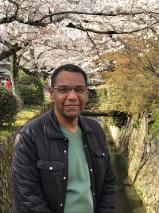 Dr. Soliman, thank you very much for this interview. How was your time here in Japan?
Dr. Soliman, thank you very much for this interview. How was your time here in Japan?Dr. Soliman: Thank you. Although the pandemic hit us soon after my arrival, and I had to adapt my research plans, I had a rewarding time in Japan. The field of cultural heritage studies, in particular, relies a lot on field data acquisition, so working from home is difficult.
However, I received a lot of guidance from my host professor Keiji Yano* to achieve my research goals, conduct joint research and expand my network within the Japanese research community.
*Professor Keiji Yano (College of Letters, Ritsumeikan University) is a Deputy Director of the Art Research Center.
Could you please tell us why you started the project of visualizing Qait'bay Fort?
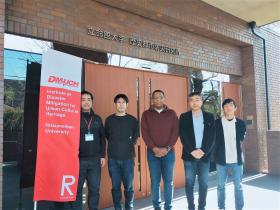
Dr. Soliman: Qait'bay Fort, built in the 15th century, is not only considered one of the most significant fortifications in Egypt but along the Mediterranean Sea.
The Fort stands on the same site as the legendary Pharos Lighthouse. However, it is exposed to natural and man-made disasters such as seismic hazards and tsunamis due to this location.
The fire disaster at Notre Dame Cathedral in Paris in 2019 reminded us of the importance of 3D visualization to preserve and document cultural heritages at risk and make our research outcomes available to scholars and the public alike.
At the same time, the project contributes to the sustainability goals of our local tourism industry, reflected in the Sustainable Development Strategy (SDS): Egypt Vision 2030.
Furthermore, we consider this a prototype project to build bridges of scientific collaboration between Ritsumeikan University, E-JUST** and NRIAG.
**Egypt-Japan University of Science and Technology (E-JUST)
Read more>>[イベント情報]April 5, 2022(Tue)The online exhibition 'Encountering Asia: Traveling, Imagination, and Creation of Arts' was jointly held by the Asia-Japan Research Institute, Ritsumeikan University, and the International Joint Digital Archiving Center for Japanese Art and Culture (ARC-iJAC), Art Research Center, Ritsumeikan University from March 1-31, 2022.
Adopted by the Program for Asia-Japan Research Development of the Asia-Japan Research Institute, the project 'Creation of Asian Art Studies' aims to open up new horizons of art research by introducing a wide range of disciplines, including esthetics, art history, dramatic arts, and other arts disciplines, as well as literature, print bibliography, history, comparative cultural history, human geography, and digital humanities to the study of the diverse arts in Asia, including Japan.
Note: A part of the online exhibition remains open to the public after the exhibition period. →Click here for the exhibition website.
- - - - - - - - - - - - - - - - - - - - - - - - - - - - - - - - - - - - - - - - - - - - - - - - - - - - - - - - - - - -
Encountering Asia: Traveling, Imagination, and Creation of Arts (めぐりあいアジア─芸術の移動・想像・創成─)
Exhibition period: March 1 (Tues) - 31 (Thurs), 2022
Free of charge (online).
URL: https://www.arc.ritsumei.ac.jp/PJ/asia/Accompanying the online exhibition, an Online Gallery Talk was held.
<Event> Online Gallery Talk
Date: March 6 (Sun), 2022 13:00 - 15:00 JST
Participation: via Zoom (e-mail notification will be sent upon registration)[イベント情報]April 1, 2022(Fri)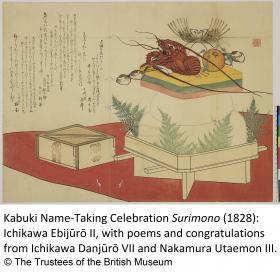 The Art Research Center (ARC), Ritsumeikan University, is pleased to announce the start of our international joint research project 'Creative Collaborations: Salons and Networks in Kyoto and Osaka 1780-1880' (「上方文化サロン:人的ネットワークから解き明かす文化創造空間 1780-1880」), supported by JRP-LEAD with UKRI, an international joint research program under UK Research & Innovation (UKRI) and the Japan Society for the Promotion of Science (JSPS).
The Art Research Center (ARC), Ritsumeikan University, is pleased to announce the start of our international joint research project 'Creative Collaborations: Salons and Networks in Kyoto and Osaka 1780-1880' (「上方文化サロン:人的ネットワークから解き明かす文化創造空間 1780-1880」), supported by JRP-LEAD with UKRI, an international joint research program under UK Research & Innovation (UKRI) and the Japan Society for the Promotion of Science (JSPS).The research project--a collaborative scholarly enterprise among researchers and institutions in Japan and the UK--aims to analyse the cultural and social impact of art and literary salons and the collective creation of art (gassaku) in early modern Japan, particularly in the Kyoto-Osaka region during 1780-1880.
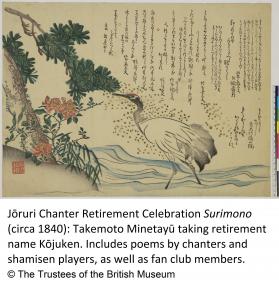 Addressing the COVID-19 challenges, the project also examines how a Japan-UK research project can be conducted efficiently using digital online technologies for remote collaboration and keeping physical traveling to a minimum.
Addressing the COVID-19 challenges, the project also examines how a Japan-UK research project can be conducted efficiently using digital online technologies for remote collaboration and keeping physical traveling to a minimum.Furthermore, the project fosters early-career researchers in Japanese studies by providing an opportunity for young researchers to gain hands-on experience in the basic aspects of digital humanities within an international research environment.
This project is led by the Principal Investigators (PI), Professor Ryo Akama, the current Director of the ARC, and Dr. Akiko Yano, Curator in the Department of Asia at the British Museum. The core team comprises researchers from the Art Research Center (ARC), Kansai University (KU), the National Museum of Modern Art, Kyoto, the British Museum (BM), and SOAS, University of London.
The project duration is three years, and its research outcomes will be presented in an exhibition at the British Museum in 2024.
 14
15
16
17
18
19
20
21
22
23
24
14
15
16
17
18
19
20
21
22
23
24



